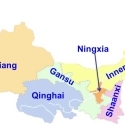19 Jun 2015
An Introduction to Guangdong Province
Guangdong province is located between 20013′- 25031′N and 109041′- 117020′E. It occupies a land area of 179.8 thousand sq. km and has a cultivated land area of 4.34 million ha, which is one of provinces with least farming land area per capita. The crop sowing area was 5.82 million ha in 2011. The population reached 104 million in 2014, with the largest population of Han people along with 52 minorities such as Zhuang, Yao, Hui, etc.
Landscapes
The province has high elevation to its north and low elevation in the south and the landscapes reveal a great diversity from mountainous regions (33%), hills (25%), plains (22%), and mesas (14%).
Climate and Vegetation
Most of the province is under control of the sub-tropical monsoon climate and some parts are affected by tropical monsoon climate. The distinct climatic characteristics can be described as a long summer, a shorter warm winter, ample rainfalls, clear rainy and dry seasons, frequent typhoons and rainstorms in summer and autumn, and occasionally extreme chilly days occurs in winter and spring. The average annual temperatures are between 19 to 24 ℃, the total annual precipitation is around 1,300 to 2,500 mm with an average of 1777 mm, the rain season spans from April to September and dry season from November to January, and the rest of a year is in between. There are roughly 290 frost-free days in the north and no frost in the south. Vegetation on the land is in great variety with clear regional distribution including tropical, sub-tropical monsoon rain forests and subtropical ever-green broadleaf forests scattered throughout its extents.
Agriculture
The major grain crops include rice, upland grain crops and tuber crops, and the major cash crops consist of sugarcane, peanut, herbs, vegetables, tea, and all kinds of fruits such as litchi, longan, banana, citrus, pineapple, mango and so on. The major tropical and sub-tropical crops are rubber trees, pepper, and sisal. Fruits production in Guangdong ranks the second in China, but the well-known litchi and banana are No. 1 in China in terms of cultivation area and yield. Major cropping rotation systems are rice - rice, rice-rice-vegetable, rice-rice-green manure, vegetable-vegetable, and peanut-sweet potato.
Soils and Fertility
The main soil types are laterite (44.7%), red soil (21.0%), paddy soil (14.8%), acid sulfate soil (8.1%), yellow earth (5.3%) and lateritic red soil (4.4%). Soils are developed from granite, basalt, arenaceous shale, and alluvial deposits. Soil fertility is generally poor for laterite and lateritic red soil, medium to high for red soils, variable for paddy soils depending on the parent materials from which the soils are developed. The acidic sulfate soil is high in organic matter (OM), nitrogen (N), potassium (K) but low in phosphorus (P). Yellow earth is commonly fertile but deficient in P. Soil tests conducted in recent years shows that near 40% of soils are deficient in K and 60% in Mg, but have remarkable P accumulation in the vegetable soils at the Pearl River Delta region.
Fertilizer Application
In 2011, fertilizer (nutrients) consumption was 2.41 million t in total (528 kg/ha of sowing area), among which there was 1,015,000 t of N, 217,000 t of P2O5, 474,000 t of K2O and 707,000 t of compound fertilizer with a N: P2O5: K2O: compound fertilizer ratio of 1: 0.21: 0.47:0.70. This indicates that the balanced fertilization has been improved considerably in the province in recent years.


